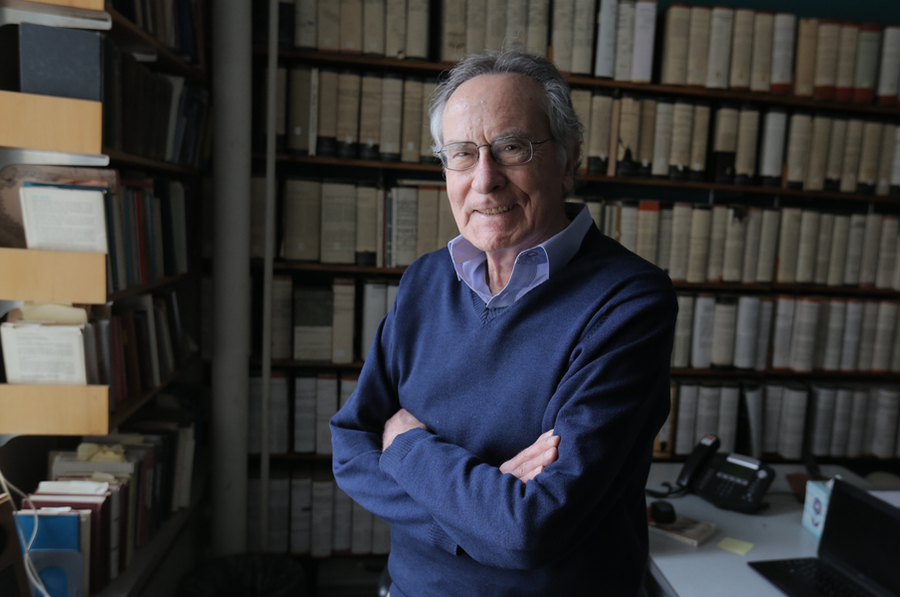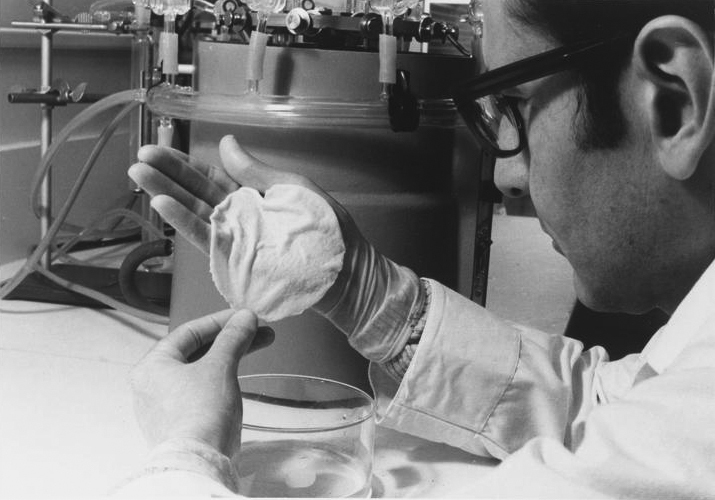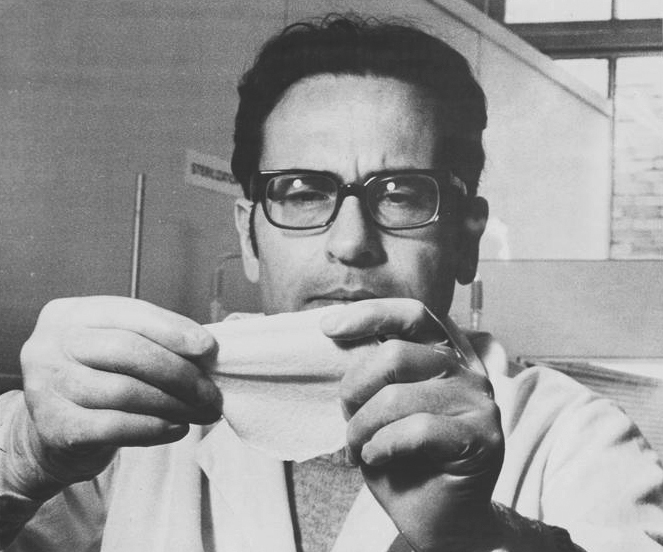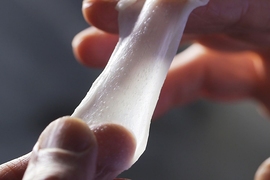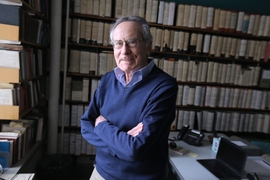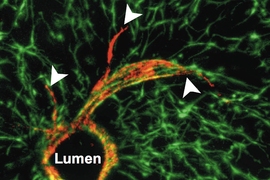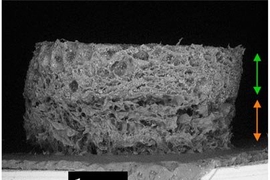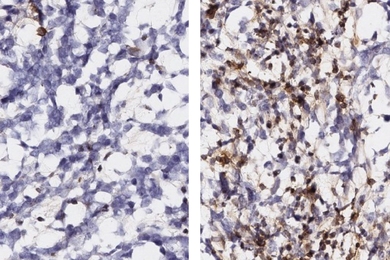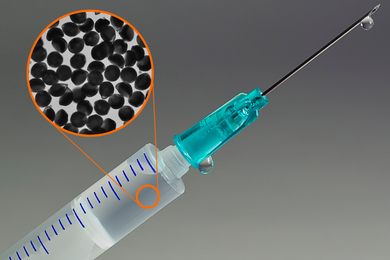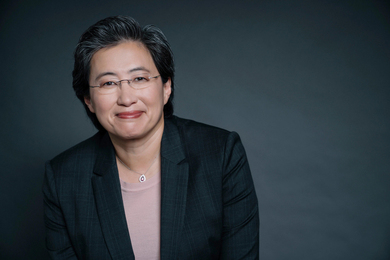Audio
Professor Ioannis V. Yannas SM ’59, a physical chemist and engineer known for the invention of artificial skin for the treatment of severe burns, and a longtime member of the MIT faculty, died on Oct. 19 at the age of 90.
“Professor Yannas was a beloved and distinguished colleague, teacher, and mentor. The impact of his inventions, and his legacy on the field of bioengineering was immense,” says John Hart, the Class of 1922 Professor and head of the Department of Mechanical Engineering.
Yannas, known to friends and colleagues as Yanni, held appointments in the MIT Department of Mechanical Engineering and the Harvard-MIT Program in Health Sciences and Technology. His principal research interest throughout his career was the process of induced organ regeneration used to replace organs that are either severely injured or terminally diseased. His work also advanced the clinical use of collagen tubes to treat peripheral nerve injuries.
In 1969, when Yannas approached the late John Burke of Massachusetts General Hospital to collaborate, Burke took him on a tour of a children’s burn unit. “There was a great deal of human misery that was confronting me, and I felt I had to do something about it,” said Yannas in later interviews. In 1981, the pair announced their success: an amalgam of a silicone outer sheet over a scaffolding of molecular material drawn from cow tendon and shark cartilage. Offering protection from infection and dehydration, the scaffolding enabled healthy skin cells to grow. Their discovery would be transformative for the treatment of burn victims.
Their artificial skin, patented and now manufactured as Integra, is still widely used on patients with severe and extensive burns, and for other applications including some types of plastic surgery and the treatment of chronic skin wounds commonly suffered by people with diabetes. The groundbreaking advance, which was later recognized as the first example of organ regeneration in adults, had previously been considered impossible.
Video: Department of Mechanical Engineering
“Yanni’s boldness in attacking a wide array of medical problems, including spinal cord transection, in his investigations of applications of collagen-based implants, inspired others, including myself, to work toward solutions to devastating conditions such as blindness, stroke, and spinal cord injury,” says Myron Spector, professor emeritus of orthopedic surgery (biomaterials) at Massachusetts General Brigham and Harvard Medical School, and an affiliate of the Harvard-MIT Program in Health Sciences and Technology. Yannas and Spector created several MIT courses together, including 2.79 (Biomaterial-Tissue Interactions).
“As we were talking about the content [for 2.79], Yanni proposed that we codify the cell behavior underlying the tissue response to implants,” explains Spector. “Within a short time, we laid out the plan for ‘unit cell processes’ to offer students a code to decipher the often inconceivably complex cellular processes that not only underlie the tissue response to implants, but that can guide the selection of the tools necessary to engineer medical devices and reveal their targets for treatment. This was all Yanni, taking a fundamental concept, the control volume used in chemical engineering to analyze systems, and applying it to cellular processes in the human body. I since use UCPs myself all the time.”
As a colleague serving as a collaborator in teaching and in research, Spector says Yannas was eager to help and to learn, bold in his thinking, smart in his choices, able to keep his eye on the goal, respectful of students as well as faculty and other colleagues, and selfless. “These are just the traits that we teach our students to look for when seeking the collaborators who are so necessary in science and engineering.”
Yannas was born on April 14, 1935, in Athens, Greece, where he completed his high school education at Athens College. He received a BA in chemistry at Harvard College in 1957, followed by an MS in chemical engineering from MIT in 1959. After a period of industrial research on polymers at W. R. Grace & Co., in Cambridge, Massachusetts, he attended Princeton University, where he completed an MS degree in 1965 and a PhD in 1966, both in physical chemistry. Yannas joined the MIT faculty immediately thereafter and remained at the Institute for the next 59 years until his passing.
For his discoveries in organ regeneration, Yannas was elected member of the National Academy of Medicine (1987), the National Inventors Hall of Fame (2015), and the National Academy of Engineering (2017). He was also elected Fellow of the American Institute of Medical and Biomedical Engineering.
Further, he was the recipient of many prestigious awards including the Society for Biomaterials Founders Award (1982) and the Society’s Clemson Award for Applied Science and Engineering (1992). He was an author of numerous journal articles, and the sole author of the influential book, “Tissue and Organ Regeneration in Adults.”
Yannas’ work, and 2015 induction into the National Inventors Hall of Fame, was the subject of “Hope Regenerated,” a video produced by the MIT Department of Mechanical Engineering. The film chronicles the development of Integra, which was initially characterized as a “failed experiment” but became a life-saving discovery that launched a new field of regenerative medicine.
“My father's relationship with MIT was deeply meaningful to him,” says Tania Yannas Kluzak. “He regarded MIT as the ideal partner in his life's work — pioneering lifesaving research in organ regeneration.”
Yannas was predeceased by his brother, Pavlos. He is survived by his two children, Tania Kluzak and her husband Gordon, and Alexi Yannas and his wife Maria; his grandchildren — Alexandra, Marina, Sophia, Philippos, and Nefeli; his sister, Elizabeth Sitinas; and many loving relatives and friends. A celebration of life will be announced at a later date.
